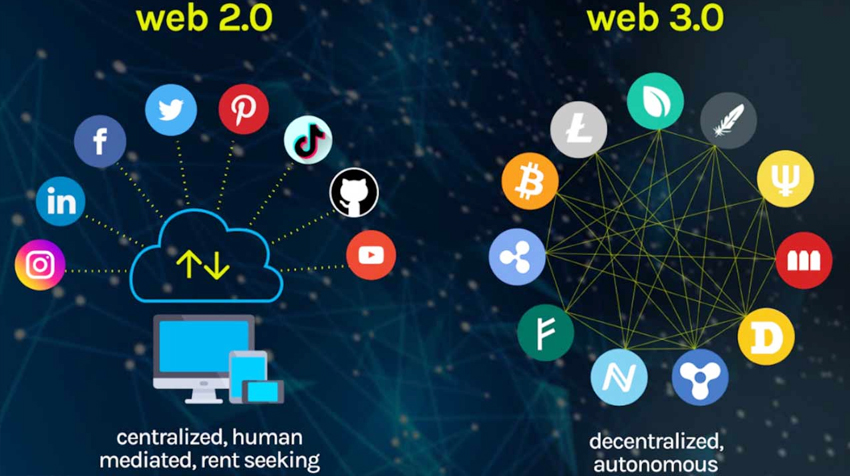
Facebook wasn’t the pioneer of Web 2.0, but it was the one that made it accessible to a global audience. It changed consumers’ digital lives forever. While Web 1.0 allowed people to visit and read websites, similar to digital newspapers and magazines, Facebook empowered users to actively participate, comment, upload photos, and engage in conversations. It marked a complete transformation of the internet and laid the foundation for the digital world we currently inhabit. Yet, it didn’t signify the demise of Web 1.0. Even 18 years after Facebook’s launch, web 1.0 is still thriving, with websites playing an integral role in our everyday digital experiences. Many of these websites have incorporated Web 2.0 features like comment sections, but they remain fundamentally rooted in Web 1.0.
With all the hype, or perhaps the post-hype, around Web 3.0, it’s easy to envision a future where our entire digital existence is lived through VR glasses and on the blockchain. However, the reality might be less dramatic. Web 3.0 is more likely to be an additional lane on the internet’s highway rather than an entirely new road replacing the old one. This, however, doesn’t downplay the immense potential of Web 3.0.
You might be familiar with Gartner’s hype cycle, which illustrates how new technologies typically progress. Initially, a new tech innovation sparks tremendous excitement and attention. The tech press hypes it up, investors pour in their funds, and the market is flooded with innovative start-ups. This peak of inflated expectations is followed by a phase where the technology’s progress can’t keep up with the initial hype. This often leads to disillusionment and skepticism, as the technology enters the trough of disillusionment.
Yet, this trough isn’t necessarily the end. It often marks a period of recalibration, allowing the technology to grow at a more sustainable pace. Eventually, it climbs the slope of enlightenment, fulfilling its true potential and gradually delivering on its initial promises. This pattern of overestimating long-term potential and underestimating short-term possibilities is often fueled by the predictable way humans adopt new technologies.
Currently, web 3.0 seems to be transitioning from its peak of inflated expectations to the trough of disillusionment. Stories about underperforming NFT auctions and declining crypto prices are commonplace. However, history has shown that this is not necessarily the end. Similar situations have been witnessed with previously hyped technologies such as VR and 3D printers, which eventually found their footing and established sustainable futures.
Considering this, there are four key factors that will define the future of Web 3.0:
- Recalibration: Web 3.0 is undergoing a phase of recalibration, where the failure of some startups and subsequent investor losses are part of the well-established pattern.
- Realism: It’s crucial to have a realistic understanding that while Web 3.0 will undoubtedly change our digital lives, it won’t entirely replace the existing digital landscape. It will likely run parallel to Web 2.0, serving as an additional lane on the digital highway.
- User Interface: A critical missing piece in the puzzle of Web 3.0 is a user-friendly interface. Facebook’s success wasn’t solely due to revolutionary protocols; it was largely driven by its transformative user experience, enabling users to create, share, and engage. Web 3.0 is in need of a similarly intuitive interface.
- Focus: Web 3.0 is vast and encompasses diverse propositions that may share underlying technology but offer distinct consumer experiences. The dependence on finding commonalities may attract investors, but it could complicate the development of diverse consumer messages necessary for widespread adoption.
Web 3.0 has the potential to reshape the internet, but it must first navigate its own evolution and find its place within the broader digital landscape.
